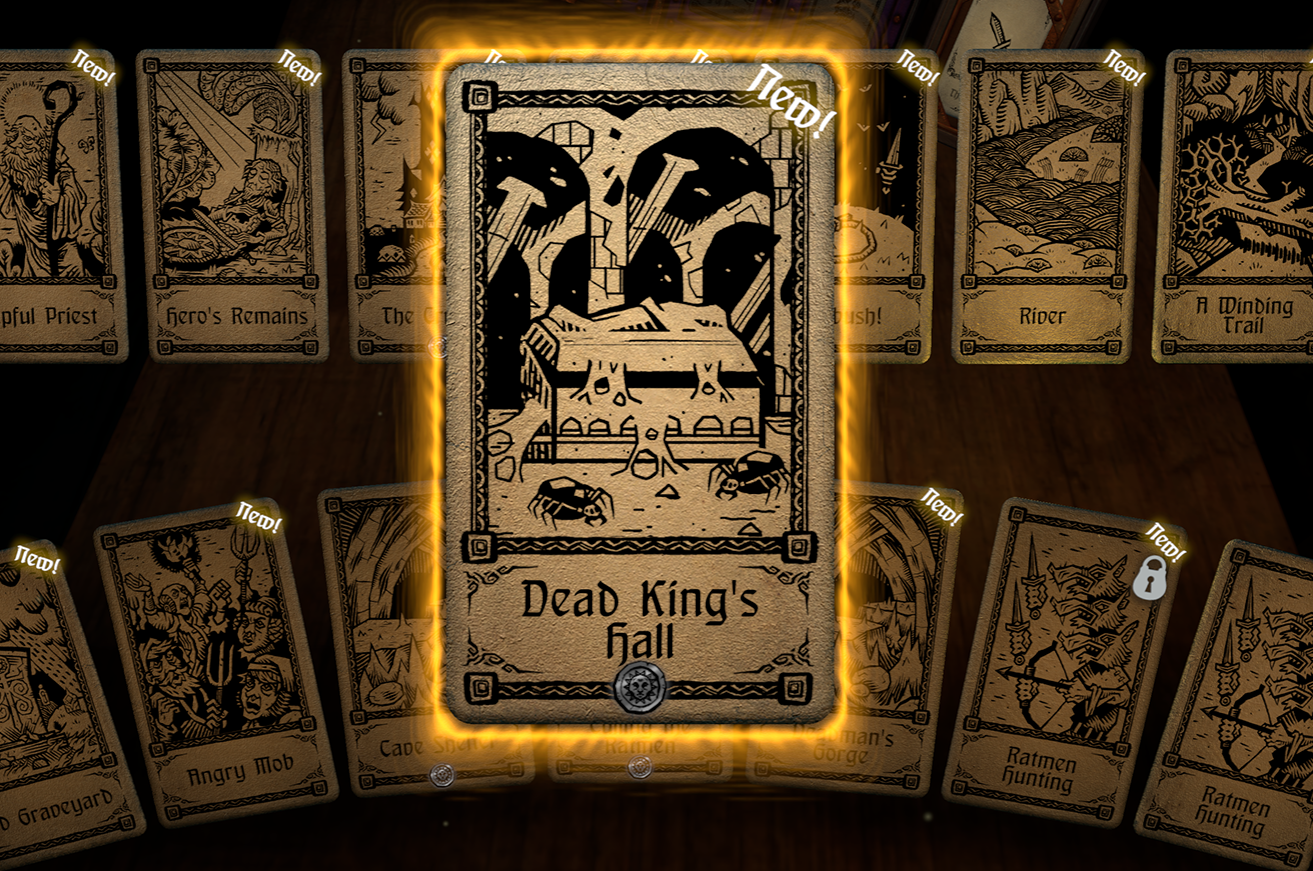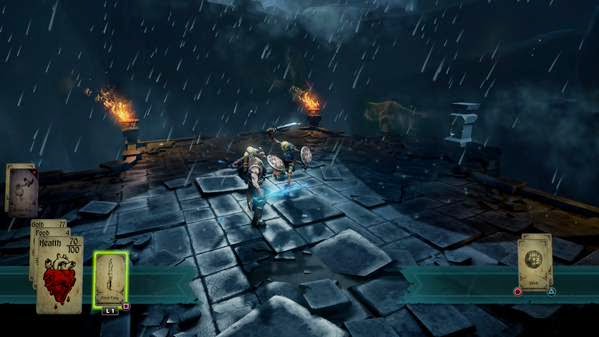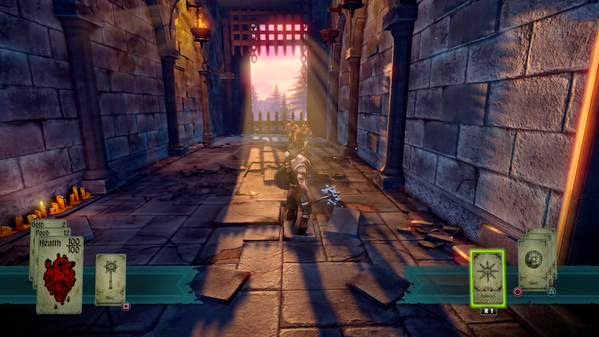Hand of Fate, by Defiant Development, shows how fundamentally illogical the Australian government was to pull the Interactive Games Fund. The game is a truly wonderful experience that would not have been possible without that funding, and it saddens me deeply that we might be missing out on future titles like this because developers simply can’t get their vision off the ground.
“Hand of Fate was made possible with assistance from Screen Australia, and we’ve managed to deliver not only a great title, but one that will break even in close to a single week of sales. We’re now in a position to continue building Australian IP, creating Australian jobs, and strengthening the Australian games industry,” Morgan Jaffit, founder of Defiant Development, said.
“We’ll also be paying back into a fund that was designed to be self sustaining, via successes such as these. Instead of our money going back to Australian development, that fund has been dismantled in the last budget. Instead of our money going back to fund more companies to do what we (and other hugely successful Aus companies like WitchBeam, MiniMega, Kumobius and more) our money will be going back into a budget that funds a ballet school over creating new knowledge-based businesses building Australian IP.
“It’s a travesty. It makes the road for those following behind us unnecessarily hard, and Australia risks missing the boat on the wealth of current opportunity in the games sector due to the short-sightedness of our Federal government.”
So enjoy Hand of Fate, because the purple patch in Australian indie development that has lead to games like it might start drying up shortly. Anyhow, politics aside, let’s talk about why the game itself is well worth your time. Combining elements of action RPGs, choose-your-own-adventure novels, and deck building card games to create a unique series of mechanics that mesh wonderfully together, Hand of Fate well deserves the critical and commercial success that it is enjoying. Back when I was a kid, one of the first Dungeons & Dragons modules that caught my attention was Ravenloft, which started its narrative with a tarot reading, with the results of those cards changing how the game would subsequently play out. The random nature of that card draw really excited my imagination, as it was a clever way in ensuring that even players that had played through Ravenloft in the past could not rely on the certainty of outcomes.
So too can players never be sure how Hand of Fate will play out. It has been balanced in such a way that even though randomness dominates everything that happens in the game, it is never unfair, but at the same time it demands that players remain vigilant and alert each and every time they play, because complacency will leave them vulnerable.
Each game starts with building a deck of cards. As you play additional quests you’ll unlock more cards, and you’ll be limited to a certain number of them that you can take into each quest (these vary, depending on the quest). These cards represent the encounters you will experience while on a quest, and range from shops, to trap infested dungeons, to combat encounters, and then the friendly folk that will help you out. Why would you add traps and combat into your deck? Because that’s how you acquire loot and more powerful weapons, which you will need when you run into a game’s inevitable bosses.
Once you’ve organised the deck, cards are dealt out face down, like a board, and you will move a miniature that represents your character from one card to the next. Landing on a new card will flip it around, and then the encounter will play out. For many encounters you’ll be given a couple of different options with how to handle the situation. For example, you might decide to provide a king with 50 gold to hire mercenaries to deal with a bandit threat, or you might ignore his request. This is where the choose-your-own-adventure elements play out, with your decisions having an immediate impact on the health and fortune of your character.
Other encounters are combat encounters, where you’d be taken to a small arena-like area, and a range of enemies will appear. Here you’ll be fighting in a counter-heavy system where you’ll wait for an icon to appear above an enemy’s head that represents an imminent attack, and the execute a counter, which will then leave the enemy open to attack attacks of your own. There are ranged enemies too, and if you time a block just right you can reflect their attack back at them.
Enemy hordes can become quite big, and fighting through them can be quite time consuming without necessarily being difficult, thanks to the generous amount to time you’re provided to counter attacks. There is a good range of enemies visually, with everything from bandits to lizardmen, ratmen and undead. These cover off the Dungeons & Dragons style bestiaries, but with enemies boiling down to melee or ranged types, combat doesn’t take long to become the game’s weak point. The counter system simply isn’t executed as well as in, say, recent Batman games, and it’s a grind to wear down enemy health at times, even as there is minimal danger to your character as you’re given plenty of time to work around attacks.
Boss battles are a different matter though, with each having unique attacks and weaknesses, and are generally quite difficult to take down. There are quite a few of them to work though in the story mode, and each of these bosses has a snippet of background to help set the tone. Hand of Fate is a dark, grim fantasy environment, not unlike my vision of the aesthetics of the old Ravenloft module, and this is supported by an art style that is perfect for the game’s tone. Cards have simple, but effective, black and white sketches on them that look like they were pulled directly from early edition Dungeons & Dragons manuals and books. The masked, mysterious dealer that shuffles the decks and sets you the challenges is also suitably sinister, and always quick with quipa that are so retro in their over-performed portent that it’s pure nostalgia.
It is clear that the development team at Defiant are fans of early era Dungeons & Dragons, with everything in the game supporting a nostalgic love for that unique style of pulp fantasy. As a fan of that genre myself, I could not put Hand of Fate down. But that’s not to say it is not without weaknesses. In addition to the issues I had with the combat I was immensely disappointed with the game’s survival mode. It takes a few story missions to unlock, and at that point I was keen to delve into something that would really test my skills at the game.
Sadly the first hour or so of each attempt at Survival is mindless in its simplicity. Enemy encounters are weak and with no threat to the hero, you can spend gold resources on equipment for him, making the early going even easier. The difficulty slowly increases until it does become the fight for survival I was looking for, but with no way to save the game midway through I found myself struggling mightily to want to commit to the grind each time I sat down in order to enjoy the later parts of the game. Coupled to that, Survival is a score attack mode, but there is no leaderboard – not even a local one. The game simply saves the highest score and leaves it at that.
These gripes don’t hurt the overall value of Hand of Fate though. It is a massively atmospheric title with an invigorating, original set of mechanics. It’s the kind of creativity we like to see from indie game developers, and shame on the Australian Government for stifling that.
– Matt S.
Editor-in-Chief
Find me on Twitter: @digitallydownld











